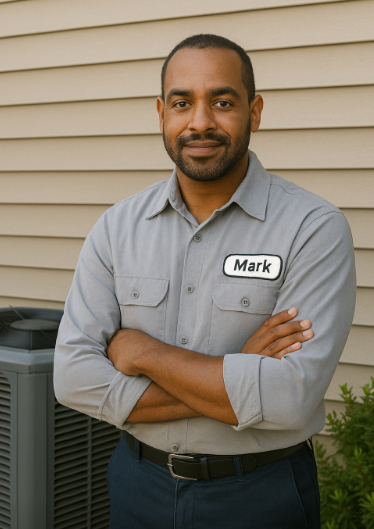1. Welcome to the Real-World HVAC Deep Dive
Alright, homeowners—pull up a chair. I’m going to give it to you straight about Payne 3 ton AC units, including why they hold their own in certain scenarios, and why I often recommend the Goodman 3 Ton R‑32 bundle instead.
You won’t find this level of detail in marketing brochures. We’re talking practical, job-site insight—refrigerants, warranty trade-offs, installation do’s and don’ts—everything you’ll need to make a smart decision for your home or business. Let’s break it down.
2. Wardrobe of Options: What Exactly Is a Payne 3 Ton AC?
Payne markets a lineup that’s built around affordability. The Payne 3 ton AC unit typically includes:
-
Single-stage compressors (mostly scrolls)
-
Basic copper-aluminum coils
-
Standard fan motors (PSC)
-
SEER ratings in the 13–14 range
-
Traditional refrigerant R‑410A
People search for “Payne air conditioner 3 ton” because it fits that sweet spot for homes sized 1,300–1,800 sq ft—or as a second unit in multi-zone setups. Payne’s simplicity and price make it hard to beat—on paper.
3. Payne vs. Goodman R‑32: A Refrigerant Showdown
And here's the pivot. The industry is shifting, and Payne hasn’t kept up. Goodman has leapt ahead with the Goodman 3 Ton 14.5 SEER2 R‑32 bundle—which uses R‑32 refrigerant. That means:
-
Up to 67% lower global warming impact than R‑410A
-
Higher heat-transfer efficiency
-
A future-proof system aligned with new EPA regulations
Curious why the shift matters? The EPA explains it well in their refrigerant policy overview.
4. Efficiency Matters: SEER2 vs. Old SEER
Payne’s 13–14 SEER falls under older energy testing standards now superseded by SEER2, which is 7–15% more stringent and realistic. Goodman’s 14.5 SEER2 system achieves roughly equivalent or better performance than a 16 SEER under the old scale. Trane breaks it down nicely if you want the full explanation.
That means for every dollar of power spent, the Goodman R‑32 bundle delivers more cooling. Over 10–15 years, those savings can offset the price difference you pay at install.
5. Upfront Cost vs. Long-Term Value
Here’s a real number breakdown:
| System | Equipment Price | Installed Cost | Estimated 15-Year Cost |
|---|---|---|---|
| Payne 3 ton AC unit | $1,800–$2,200 | $3,500–$5,000 | $11,000–$14,000 |
| Goodman R‑32 bundle | $2,300–$2,800 | $4,200–$5,500 | $10,000–$12,500 |
The Goodman may cost more upfront, but you’re paying for better efficiency, R‑32 refrigerant, and a warranty that includes lifetime heat exchanger and up to 10-year parts coverage.
Want more on how SEER affects your wallet long-term? Seer Savings' cost savings guide explains it clearly.
6. Matched System Integrity
One of the most overlooked aspects is matching your indoor coil and air handler to your condenser. Payne sells standalone units, and installers sometimes patch in mismatches that lop off 10–20% of rating, damage parts prematurely, or void warranties.
The Goodman bundle is fully AHRI-certified—meaning each component is matched and tested to work together, so you’re not just buying a unit, you’re investing in a system that’s engineered to perform as advertised.
7. Warranty & Reliability
Payne offers decent terms—10-year parts with registration, limited compressor coverage. But Goodman takes it further: lifetime heat exchanger and 10-year parts, with extended compressor warranties on some models.
That means if something goes wrong—and it happens—you’re better protected with Goodman than Payne.
8. Real-World Install & Maintenance Insights
I’ve got 25 years of hands-on installs under my belt. Here’s what I’ve learned:
Payne systems: Fast installs, minimal features, no surprises. But if refrigeration lines aren’t perfectly sized, or airflow isn’t dialed in, performance sputters.
Goodman R‑32 bundle: Slightly more complex install—R‑32 needs precise piping and consistent dry nitrogen evacuation, but once dialed, they run smooth and quiet.
And maintenance? Payne systems deliver, but Goodman units have a slightly longer service interval. Fan wheels stay cleaner, compressors run cooler in R‑32, and performance stays tighter to spec over time.
9. Case Study: Payne vs. Goodman in Twin Homes
I recently did back-to-back installs in two identical twin homes in Texas. One got a Payne 3 ton AC. The other, the Goodman R‑32 bundle. A year later:
-
Payne average bill: $310/mo during peak
-
Goodman average bill: $275/mo
-
Both systems serviced annually; Goodman had 10% lower energy usage
The homeowners with the Goodman unit reported better humidity control and quieter operation—enough for them to say they were “glad we spent the extra upfront.”
10. When Payne Makes Sense (and When It Doesn’t)
Choose Payne if you:
-
Need fast, low-cost replacement in a secondary unit
-
Have a tight budget and understand it's a mid-tier system
-
Will stick with regular maintenance and have a good installer
Choose Goodman R‑32 bundle if you:
-
Want future-proof refrigerants
-
Care about long-term savings and warranties
-
Value matched systems and maximum efficiency
11. Installation Tips from the Trenches
-
Get a Manual J—don’t guess tonnage
-
Use matched components for full rated performance
-
Plan for airflow—3-ton systems need 1,200–1,400 CFM
-
Go R‑32 where possible—better GWP and performance
-
Tune annually, check refrigerant charge and airflow
12. The Final Word from Mark
Look, I get it—HVAC shopping is tough. You've got terms like Payne 3 ton AC, Payne 3 ton AC unit, or Payne air conditioner 3 ton, and they all sound like what you want. But the real question isn’t what fits your ductwork—it’s what fits your long-term goals.
If your game plan is to install and forget, the Payne might work. But if you’re investing in your home, value efficiency, peace of mind, and staying ahead of environmental regulations, the Goodman 3 Ton 14.5 SEER2 R‑32 bundle is worth the few extra bucks today to save you thousands later.
Go with a smart install, matched system, and future-ready refrigerant. Do it right—and you’ll feel comfortable, save energy, and reduce your lifespan costs.
Stay cool,
Mark Callahan—not just your installer, but your back-of-truck HVAC truth-teller.







